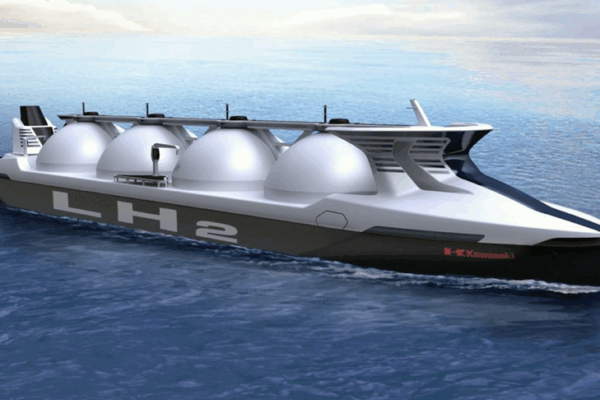Norway’s investment in research and development (R&D) reached nearly 89 billion NOK in 2022, highlighting the country’s commitment to innovation and technological advancement. The distribution of these investments, however, is uneven, with a significant concentration in major regions like Oslo, Viken, Trøndelag, and Vestland.
As Norway’s capital, Oslo commands the highest R&D expenditure. The city’s rich network of universities, research institutions, and high-tech companies drives this investment. Key players include the University of Oslo and numerous private sector entities, contributing to a robust research infrastructure that supports diverse scientific and technological endeavours.
Adjacent to Oslo, Viken ranks second in R&D spending. The region’s industrial base, particularly in technology and manufacturing, propels its significant R&D contributions. Viken benefits from its proximity to Oslo, facilitating strong collaborations and shared resources between the two regions.
Home to the Norwegian University of Science and Technology (NTNU), Trøndelag is a powerhouse of academic research. NTNU’s extensive research output, especially in engineering and natural sciences, underpins the region’s R&D profile. Collaboration with local industries further enhances Trøndelag’s research landscape.
Vestland’s focus on maritime and energy sectors positions it as a critical R&D contributor. The region hosts several specialized research institutes and companies dedicated to marine technology and offshore energy, fostering a dynamic environment for innovation in these fields.

Impact on Small Regions
While major regions dominate Norway’s R&D landscape, small regions also benefit significantly from targeted R&D activities. These impacts include:
Economic Growth
R&D stimulates local economies by creating jobs and attracting investments. Small regions, particularly those with specific industrial strengths, can harness R&D to drive economic development.
Knowledge Transfer
Collaborations between small regions and larger research institutions enable knowledge transfer. Small regions gain access to cutting-edge technologies and expertise, enhancing their innovation capabilities.
Infrastructure Development
Investments in R&D infrastructure, such as research parks and innovation centres, improve local facilities. These developments attract businesses and researchers, creating a conducive environment for sustained R&D activities.
Regional Specialization
Small regions often develop specialized R&D niches based on local resources and strengths. This focus allows them to excel in specific areas, such as marine technology in coastal regions or renewable energy in resource-rich areas.
Challenges and Opportunities
Small regions may face constraints in financial and human resources for R&D, hindering their ability to compete with larger regions. Addressing these limitations through targeted funding and policy support is crucial.
Talented researchers may migrate to larger cities with better opportunities, leading to a brain drain in small regions. Developing local talent through education and training can mitigate this issue.
Access to R&D funding is often skewed towards larger regions. Ensuring equitable distribution of funds across all regions can promote balanced growth.
Strengthening networks between small regions and larger institutions fosters collaboration. Joint projects and partnerships can leverage diverse expertise, driving innovation nationwide.
R&D Funding Sources
Public Sector
Government grants, regional funding programs, and EU funding support a wide range of R&D activities. The Norwegian Research Council is a key player, distributing funds to universities, research institutes, and businesses.
Private Sector
Corporate investments, public-private partnerships, and venture capital drive significant R&D efforts. These investments focus on developing new products and maintaining competitive advantage.
Academic Sector
Universities allocate part of their budgets to R&D, supplemented by external grants. Endowments and donations from alumni and philanthropists also support specific research projects.
Norway’s regional distribution of R&D reflects both concentration in major regions and significant impacts on smaller regions. Addressing challenges such as resource limitations, brain drain, and funding inequities through supportive policies and decentralized funding is crucial for fostering a balanced and dynamic R&D environment. By leveraging public, private, and academic funding sources, Norway can continue to drive innovation in various research fields.
Impact of R&D on Education in Norway
Research and development play a crucial role in shaping and enhancing education in Norway. The synergy between R&D and education fosters innovation, enriches academic programs, and builds a skilled workforce.
Here’s how R&D impacts education across the country.
Universities and colleges incorporate the latest research findings into their curricula. This ensures that students are exposed to current knowledge and technological advancements, preparing them for the evolving job market. R&D drives the development of new teaching methods and tools. Technologies such as virtual labs, online platforms, and interactive learning modules improve the quality of education, making learning more engaging and effective.
Students gain practical experience through involvement in research projects. Universities often encourage undergraduates and postgraduates to participate in R&D activities, fostering critical thinking and problem-solving skills.
Collaboration between academic institutions and industries provides students with real-world research opportunities. These partnerships help bridge the gap between theoretical knowledge and practical application, enhancing students’ employability. Investments in R&D infrastructure, such as research labs and innovation centres, benefit educational institutions. Access to advanced facilities enables students and faculty to conduct high-quality research and experimentation.
R&D funding from government grants, private investments, and EU programs supports educational institutions. These funds facilitate the development of research programs, scholarships, and academic projects, enriching the overall educational experience. Strong R&D programs attract talented researchers and educators to academic institutions. This enhances the quality of teaching and research, creating a stimulating learning environment for students.
By providing research opportunities and advanced educational programs, institutions retain skilled graduates who contribute to the local economy and innovation ecosystem.
R&D initiatives lead to the development of continuing education and professional development programs. These programs help professionals stay updated with the latest advancements in their fields, promoting lifelong learning.
Educational institutions often engage with the community through public lectures, workshops, and outreach programs. These initiatives disseminate research findings and foster a culture of learning and curiosity among the broader public.
R&D significantly impacts education in Norway by enhancing curricula, developing research skills, improving infrastructure, and attracting talent. The integration of research into educational programs ensures that students receive a contemporary and relevant education, preparing them for future challenges and opportunities. Through continued support and investment in R&D, Norway can maintain a high level of innovation and education, fostering a skilled and knowledgeable society.
Future Trends
Research and development continue to evolve, driven by technological advancements and global challenges. Key trends shaping the future of R&D in Norway (and globally) include:
Artificial Intelligence
AI is revolutionizing various sectors, from healthcare to manufacturing. R&D focuses on developing advanced AI algorithms, machine learning models, and data analytics to enhance productivity and innovation.
Internet of Things
IoT integration facilitates smart cities, healthcare systems, and industrial automation. Research aims to improve connectivity, data processing, and security of IoT devices.
Renewable Energy
As the world shifts towards sustainable energy, R&D in solar, wind, and hydro technologies is gaining momentum. Innovations in energy storage and grid management are also critical areas of focus.
Circular Economy
Research on recycling, waste reduction, and sustainable materials supports the transition to a circular economy. This includes developing biodegradable materials and efficient recycling processes.
Personalized Medicine
Advances in genomics and biotechnology enable personalized healthcare solutions. R&D in this field focuses on developing tailored treatments based on individual genetic profiles.
Pandemic Preparedness
The COVID-19 pandemic has highlighted the need for robust health systems. Research is directed towards vaccine development, rapid diagnostics, and effective treatment protocols for future pandemics.
Additive Manufacturing (3D Printing)
R&D in additive manufacturing is transforming production processes. This technology allows for the creation of complex, customized components with reduced waste and lower costs.
Smart Factories
The integration of AI, IoT, and robotics is leading to the development of smart factories. These facilities leverage advanced technologies for efficient, automated production.
Cross-Sector Partnerships
Collaboration between academia, industry, and government is crucial for driving innovation. Joint research initiatives and public-private partnerships facilitate the sharing of knowledge and resources.
Open Innovation Platforms
Open innovation encourages the exchange of ideas and solutions across organizations. Platforms for collaborative R&D projects and crowdsourcing innovation are becoming increasingly popular.
The future of R&D is shaped by digital transformation, sustainability, health advancements, and collaborative efforts. Norway’s R&D landscape is well-positioned to embrace these trends, driving innovation and maintaining its competitive edge in the global arena. By focusing on these emerging trends, Norway can continue to foster a dynamic and forward-thinking R&D environment.
Source: https://www.forskningsradet.no/indikatorrapporten/indikatorrapporten-dokument/
R&D expenditure. Fixed 2015 prices. 2010 – 2021.
Photo: NTNU




